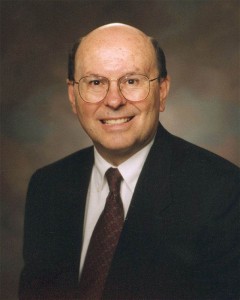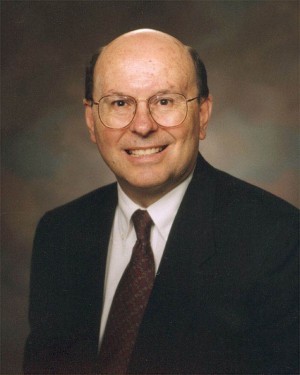 Quentin LaMar Cook is a member of the Quorum of the Twelve Apostles of The Church of Jesus Christ of Latter-day Saints, whose members are sometimes nicknamed Mormons. He was born September 8, 1940, in Logan, Utah.
Quentin LaMar Cook is a member of the Quorum of the Twelve Apostles of The Church of Jesus Christ of Latter-day Saints, whose members are sometimes nicknamed Mormons. He was born September 8, 1940, in Logan, Utah.
Even as a child, Elder Cook was known for his compassion. His older brother recalls a time when he—the brother—was the school fire drill captain. It appeared the drill evacuation he was leading would set a new school record until it was announced there was still a child in the building. That child was his little brother, Quentin, a first grader who had stayed behind to retrieve the boots of a boy who had slipped out of them and hadn’t stopped to put them back on. He didn’t want his friend to get cold feet in the snow.
As a young boy, he longed to emulate an ancestor who had been sent to rescue Mormon pioneers in the Martin Handcart Company. His grandfather told him that this ancestor was heroic because he had chosen to “follow the prophet,” meaning he would do as the prophet asked him to do. His father explained that today it was equally heroic to follow the His father required the family to set goals and work towards them, a habit which has served Elder Cook well in his lifetime. In high school, he was very involved in school events, playing both basketball and football. He was a quarterback on the football team. He also participated in debate and was chosen, along with another student, to represent the state at a national debate event. There he met five men who were or would become presidents of the United States. His senior year, he served as president of the student council.
At the age of fifteen, he decided to obtain a testimony of the “Mormon Church” for himself after watching his brother convince their father, who no longer attended church, to allow him to serve a mission for the Church. The answer to Elder Cook’s prayer was so strong he had no doubts at all as to its truthfulness.
Elder Cook attended Utah State University and served on the student council there. In 1960, he took a two-year leave to serve a mission for his church, serving in the British Mission.
On November 30, 1962, he married his wife, Mary Gaddie, in a Mormon temple in Logan, Utah. They had known each other since seventh grade. They now have three children. The next year, he graduated from Utah State University with a degree in political science. He then continued his education at Stanford University law school, graduating in 1966. He went to work for law firm of Carr, McClellan, Ingersoll, Thompson and Horn in San Francisco. His offer of employment with them came after a lunch in which he was offered alcohol, which he refused, because Mormons follow a health code called the Word of Wisdom, which prohibits alcohol. He was later told the offer was a test. His résumé had listed his church mission and they wanted to know if he had integrity enough to stay true to his beliefs even when an important job was at stake.
His church work in San Francisco put him into contact with people from many countries and with those both rich and poor. He served as a bishop (similar to a pastor) and then as the president of a stake (a stake is similar to a diocese) Both positions were unpaid, as the church operates as a lay church, and were filled as he also worked in his career. The congregations under his care often served the needs of a variety of immigrants. At the same time his church work was progressing, his professional career was also progressing. He served as the president and CEO of California Healthcare System, and when it merged with Sutter Health, he became Vice-Chairman.
He then served as a regional representative and area authority for the Latter-day Saints (“Mormons”), and next served them as a member of the Second Quorum of the Seventy and then as a member of the First Quorum of the Seventy. He served as a member of the Philippines/Micronesia Area Presidency and as President of the Pacific Islands and the North America Northwest Areas of the Church. Another critical role he played was as Executive Director of the Church’s Missionary Department. During his time there, he assisted in rolling out a new and revolutionary manual called, Preach My Gospel. This manual changed the way missionary work is done in the church and also provided a valuable tool for families to work together to better understand their religion. This manual taught missionaries to create their own discussions with those who are learning about the church, using inspiration and personal knowledge rather than pre-written lessons.
Elder Cook now serves full-time as a member of the Quorum of the Twelve Apostles, and has retired from his professional career. He assumed this position on October 6, 2007.
One of his current assignments as a general authority is to oversee Public Affairs, a challenging task in a time when the church is receiving a great deal of attention. In this context, he has spoken on such challenging subjects as polygamy, issues related to Mitt Romney’s campaign, and the same-sex marriage debate. He also met with Michelle Obama when she visited Mormon Church headquarters.
Twitter •


 Watch a video about the restoration of the gospel on lds.org
Watch a video about the restoration of the gospel on lds.org